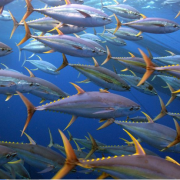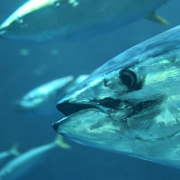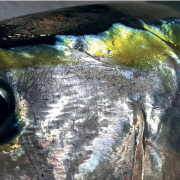Hydrothermal mercury: the natural history of a contaminant
Our colleague Hélène Planquette participated in an international study coordinated by the CNRS aiming to estimate the contribution of hydrothermal sources to the mercury stock present in the oceans.
This study has just been published in the journal Nature Geoscience and is the subject of a CNRS press release:
An international team of researchers, coordinated by the CNRS (see inset), has established the first global estimate of hydrothermal mercury (Hg) emissions from mid-ocean ridges. The UN Minamata Convention on Mercury aims to reduce human exposure to toxic mercury by reducing anthropogenic emissions. We are primarily exposed through the consumption of fish that bioaccumulate Hg from the ocean. The current paradigm is that anthropogenic mercury emissions (currently 3,100 tons per year) are responsible for a 21% increase in the global oceanic mercury reservoir. This estimate is inaccurate because we do not know how much natural mercury was present in the ocean before the start of anthropogenic emissions.
We are also unable to quantify the impact of anthropogenic emissions on Hg levels in fish. Hydrothermalism is the only direct source of natural Hg to the ocean. Previous studies, based solely on hydrothermal fluid measurements, suggested that hydrothermal Hg inputs could range from 20 to 2,000 tons per year. This new study used measurements of hydrothermal plumes, seawater, and rock cores in addition to fluid measurements from the Trans-Atlantic Geotraverse (TAG) hydrothermal source on the Mid-Atlantic Ridge.
The combination of observations suggests that the majority of enriched Hg in the fluids would be diluted in seawater, and a small fraction would precipitate locally. Extrapolation of the results indicates that the overall hydrothermal Hg flux from mid-ocean ridges is low (1.5 to 65 tons per year) compared to anthropogenic Hg emissions. Although this suggests that the majority of Hg in the ocean is of anthropogenic origin, it also raises hope that strict implementation of emission reductions under the Minamata Convention will reduce mercury levels in fish and human exposure.
Article Reference:
Torres-Rodriguez, N., Yuan, J., Petersen, S. et al. Mercury fluxes from hydrothermal venting at mid-ocean ridges constrained by measurements. Nat. Geosci. (2023).











